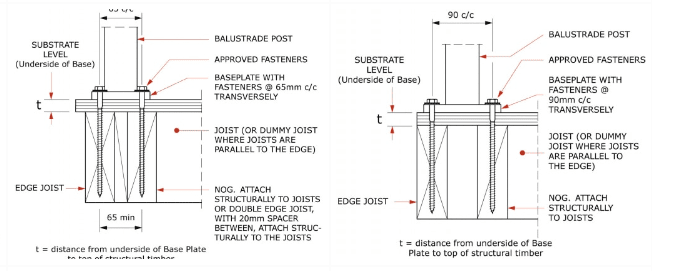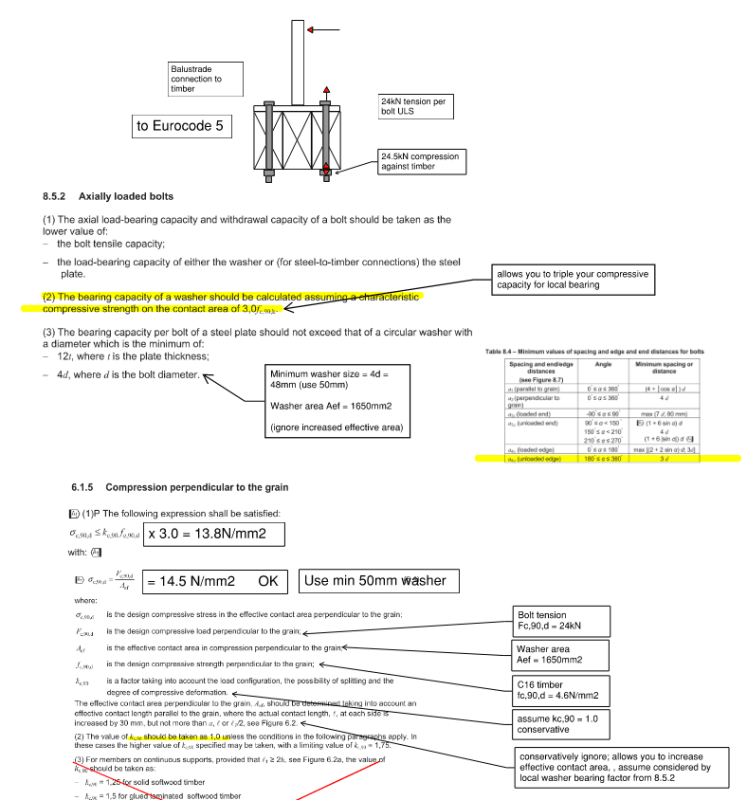kauri
Structural
- Aug 13, 2018
- 36
How do you rationalise these types of balustrade connections?

Source:
Withdrawal strength wouldn't be an issue, but I thought you need 5d edge distance for shear.
How about torsion - is this nominal and taken out by joist end connections and nominal stiffness provided by the dummy joist?
Cheers,
Kauri

Source:
Withdrawal strength wouldn't be an issue, but I thought you need 5d edge distance for shear.
How about torsion - is this nominal and taken out by joist end connections and nominal stiffness provided by the dummy joist?
Cheers,
Kauri


